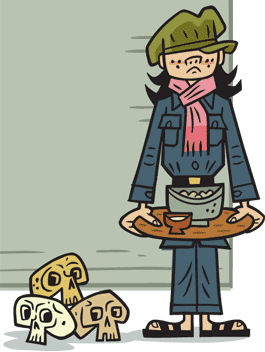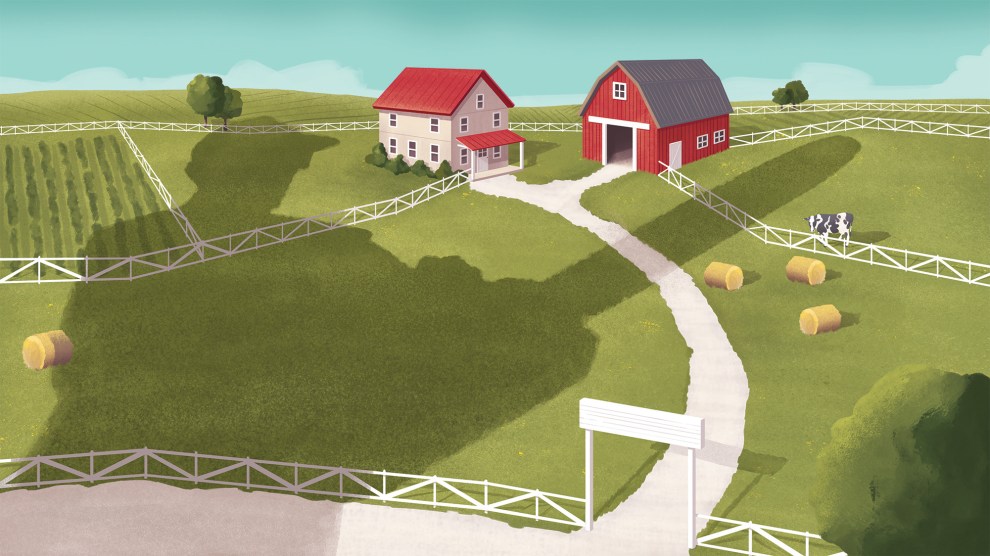
Illustration: Steve Waxman
For as long as it lasted, Phnom Penh’s History Café served a depressingly simple fixed menu: a bowl of bland, watery rice soup, a pinch of salt, red corn kernels mixed with banana leaves, and a cup of bitter tea, all served up on tin tableware by waitresses clad in black pajamas and red-checkered scarves. Patrons of the establishment were to sit on crude wooden benches and listen to outdated songs played over a loudspeaker.
The café’s option-free menu and oppressive canteen-style atmosphere were meant to evoke the paltry fare and harsh conditions the Khmer Rouge dished out during its genocidal rule from 1975 to 1979, when it tried to turn Cambodia into an agrarian utopia, killing up to 2 million people in the process. The $6 meal even included a sweet egg dessert like the ones the Khmer Rouge gave workers once a year on New Year’s and a souvenir red scarf, which the hostess was to wrap around diners’ necks as they entered.
“This is a new alternative for learning about the history,” said the owner of the themed eatery, 25-year-old entrepreneur Hakpry Sochivan, who owns four other restaurants and a chain of traditional Khmer massage parlors. Sochivan suspected that the former torture center across the street from his café, now a genocide museum, didn’t offer a complete experience. “People go to Tuol Sleng and only learn about the genocide,” Sochivan argued. “Let the tourists imagine for themselves what the period was like.”
Yet despite some radio play and positive buzz, the forces of forgetting soon overcame Sochivan’s vision. Just two weeks after its opening, the History Café was shut down, ordered closed by the minister of tourism, who cited failure to obtain a license, historical inaccuracy, and poor taste.
No loss. Sochivan confesses that during its short-lived run, his restaurant served exactly two customers. One of them, a tourist from Malaysia, appeared to have missed the café’s message, quipping to a reporter, “It’s good for me to slim down.”
















